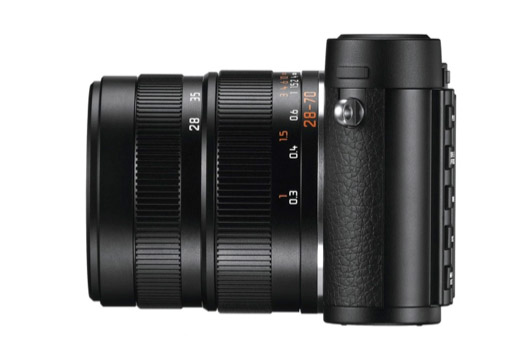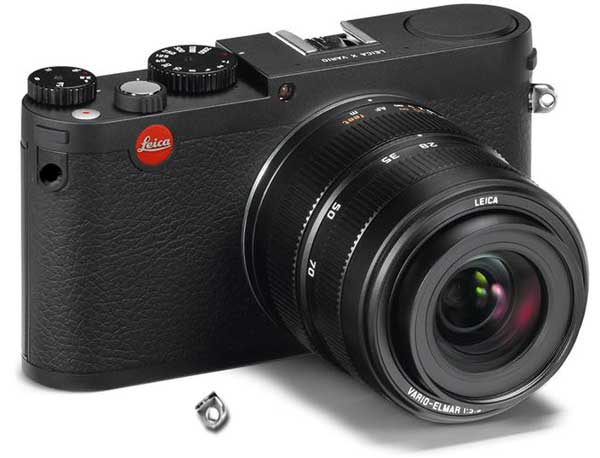Two weeks ago, shortly after the leak of the specification of the new Leica “Mini M” I came out and said that the information was correct. Despite stubborn resistance from the photographic community, expecially from Leica forum contributors, I was right and they were indulging in wishful thinking. I even got the price right, €2,450.

The X Vario was unveiled today and it is indeed an X2 with added video and a relatively slow fixed zoom lens. When I first realised the leaked specification was likely to be correct my reaction was one of disbelief. How could Leica introduce what appears to be such an uncompetitive camera at such a high price? How could it be a success?
Well, in the past two weeks I have had something of a change of heart. Sure, it will not be welcomed by the Leica fanboys and it is totally uncompetitive in today’s knowledgeable market. But maybe Leica is not so daft after all; maybe the company knows its target audience more than we think.

It is an attractive camera even if it fails miserably to get the pulse racing. It is no doubt a worthy little camera. But that lens is the problem. An aperture range of f/3.5 to 6.4 is slap bang in the middle of Nikon or Canon kit lens territory. Buy any entry level DSLR and you will likely get an 18-55mm (28-83mm equivalent) lens with a widest aperture similar to that on the slow X Vario. But even the cheap plastic-mount Nikon lens is faster at the long end, not to mention being 13mm longer. Leica’s new lens just doesn’t stack up for a premium grade camera at an eye-watering price. But will it offer sufficient attraction for the amateur photographer who cares little about specification and is prepared to pay a premium price for a piece of Leica eye candy?
Let’s not get too carried away by the aperture lest we fall into the trap of chasing the Summilux or Noctilux purely for snob value. Slower lenses have their place and are perfectly useful 75% of the time. This is the sweet spot where most general photography is conducted, within the aperture range of the new lens. Street photography and landscape will be a breeze for the Vario. I have no doubt that, within the constraints of its design, this zoom will be a good, sharp and thoroughly pleasant optic. It could even have IQ to die for. After all, that is Leica’s speciality. It will be no bokeh king, of course. The X Vario is by no means a bad camera, just uncompetitive and expensive.
The X2, on which the X Vario is based, has not been a great seller. Yet it does appeal to photographers who appreciate a simple, no-bells-and-whistles approach to photography, particularly street work. It has no video, no scene modes and is very simple to operate provided you have a basic knowledge of technique. I love the f/2.8 X2 primarily for that simplicity but also for the wonderful IQ, impressive silence and sheer unobtrusiveness. It is less bulky and far more handleable than, say, Sony’s ground-breaking RX1. As a carry around 35mm APS-C camera the X2 superb, hardly larger than the new Ricoh GR and attempting a similar job.
Louis Vuitton
These qualities in the X2 that appealed to the enthusiast are absent in the X Vario. It will do the job, most of the time, but hardly stirs the breast. In no way can the Vario be regarded as a step up from the X2; it is more likely a step back.
The new camera will sell to a certain type of customer, a customer Leica now values highly. These are people with money to spare who want an easy-to-use camera sporting the Leica badge. They are the same people who will choose an expensive Louis Vuitton bag when there are thousands of more practical ways of carrying around your stuff.
The X Vario buyer will have little knowledge of the basics of photography and certainly no inkling of what it means to have a fast lens. They will swallow the myth that this is indeed a “mini M”. The new camera will sell from outlets such as the boutique Leica Store in Oriental Plaza mall, in Beijing’s Wangfujing, which I visited last month. Perhaps, after all, this is the only market Leica is interested in.
Fans expected Leica to listen to what the market has been saying for the past two years: That enthusiasts want a smaller, cheaper camera to accept Leica glass. These days everyone and his dog is fitting Leica lenses to APS-C and, even, M4T bodies. Yet Leica, unlike Sony and Fuji in particular, is entirely absent from the mirrorless APS-C interchangeable lens market. Not only has Leica lost the opportunity to address that market, it has also failed effectively to challenge the fixed-lens 35mm compacts such as the Fuji X100S or, even worse, the full-frame sensor RX1.
Instead, Leica appears to have ignored all these marketing clues. But maybe Leica does know best and is catering for a new type of customer. We could all be surprised by the X Vario but I wouldn’t hold your breath.
